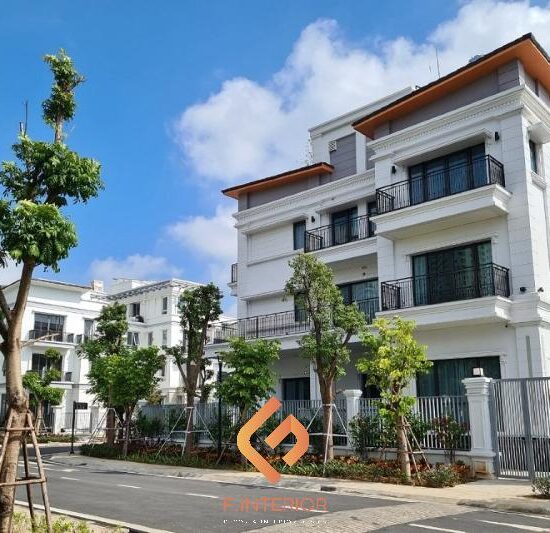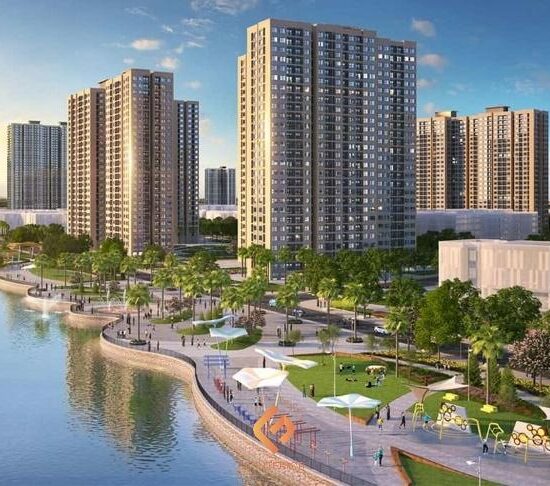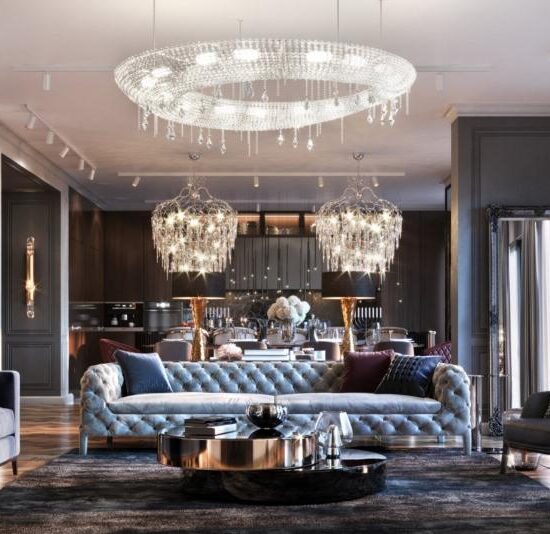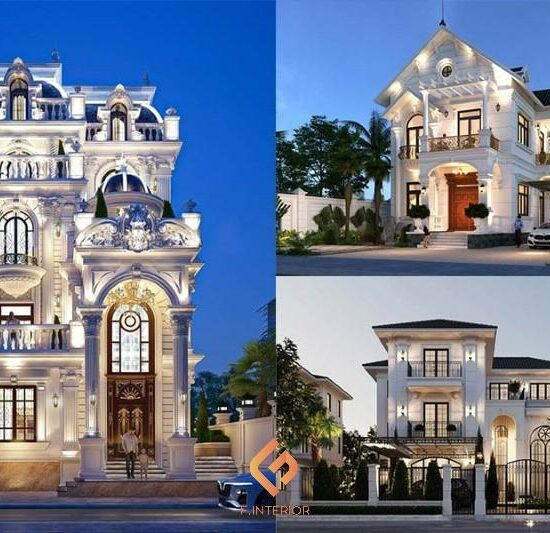Thiết kế nội thất phong cách Scandinavian mang lại sự kết hợp hoàn hảo giữa tính thẩm mỹ và công năng, phù hợp cho không gian sống của doanh nhân. Bằng cách sử dụng ánh sáng tự nhiên, tông màu trung tính, và những vật liệu tự nhiên, phong cách này tạo ra một môi trường làm việc hiệu quả và thanh lịch. Trong bài viết này, các chương sẽ giới thiệu cách tạo ra không gian tối giản thông qua việc lựa chọn nội thất, vật liệu, và cấu trúc, mang đến cảm giác thoải mái mà vẫn giữ được nét sang trọng cho các doanh nhân.
Sự Đơn Giản và Chức Năng Trong Thiết Kế
In the realm of design, simplicity is often revered not just for its aesthetic appeal but for its ability to enhance functionality. As we embark on the journey of understanding simple design, it’s crucial to recognize how it seamlessly integrates into various spaces, creating environments that are both beautiful and practical.
Simplicity in design is characterized by clean lines, minimalistic elements, and an emphasis on usability. This approach to design eliminates unnecessary complexities, allowing the primary elements to stand out and serve their intended purpose. In essence, it transforms spaces into functional works of art, where every detail serves a purpose, and there is nothing extraneous.
A prime example of this philosophy can be found in modern interior design projects such as spa environments, where tranquility and functionality must coexist harmoniously. Spaces that are efficiently planned and thoughtfully arranged not only cater to aesthetic sensibilities but also enhance the overall user experience. Simple designs often employ a limited color palette, focusing on neutral and natural hues, which serve to calm the mind while accentuating the functional aspects of the space.
Moreover, the materials used in such designs are carefully chosen to support both durability and visual appeal. For instance, natural woods and textured fabrics can add warmth and comfort while maintaining a simple and elegant look. By prioritizing functionality, designs become more than mere decorations; they become spaces where every piece has a role to play in the user’s experience.
The art of simplicity in design is about stripping away the non-essential and creating environments that are intuitive and instinctive. This concept aligns perfectly with the design of intimate spaces like spas, where the goal is to provide relaxation through a clutter-free, serene environment.
For further exploration on how simplicity in design can transform spaces, consider visiting Finterior’s blog on spa design, which offers insights into crafting spaces that balance aesthetic simplicity with functional excellence.
Tông Màu Trung Tính và Sự Tinh Tế
In the sphere of design, neutral tones play an instrumental role, exuding a subtle elegance that speaks to both simplicity and sophistication. Neutrals are more than just whites, blacks, and grays; they encompass a wide spectrum, including soft beiges, shades of taupe, and muted browns. Each hue within this palette contributes uniquely, offering versatility and timeless appeal which harmonize with various design styles.
Neutral tones serve as a canvas, allowing other elements such as textures, accessories, and accent pieces to take center stage, enhancing their presence without overwhelming or detracting from the overall aesthetic. When implemented thoughtfully, these tones can elevate a space, infusing it with a sense of calm and cohesion. The subtlety of neutral colors gently guides the eye, creating a seamless flow that tends to evoke relaxation and comfort. This characteristic makes them particularly favorable in spaces meant for unwinding and recharging, such as bedrooms and living areas.
In designing interior spaces, a major consideration is how neutrals reflect and absorb light, often making a room appear more spacious and open. The reflective quality of lighter neutrals can amplify natural light, enhancing the room’s warmth and welcoming ambiance. Moreover, neutral tones effortlessly adapt to seasonal changes, enabling continuous updates in aesthetics through the easy interchange of complementary furnishings.
Moreover, the integration of textures with neutral colors can add depth and dimension. Elements such as stone, wood, and textiles play off of neutral hues beautifully, adding layers of interest and character. This textural interplay invites a tactile experience, making spaces feel more engaging and inherently balanced.
For those seeking inspiration on how to effectively incorporate neutral tones into their design projects, exploring styles like indochine interior design can be particularly enlightening, as they provide rich examples of neutrality infused with cultural elegance. Ultimately, the power of neutral tones lies in their ability to bridge aesthetic simplicity with a profound, understated sophistication.
Sử Dụng Tối Đa Ánh Sáng Tự Nhiên
Incorporating natural light into interior design is not just about aesthetics; it’s an essential aspect of creating inviting and vibrant spaces that enhance well-being. The nuanced dance of sunlight within a room can dramatically alter mood and ambiance, making it a powerful tool for designers aiming to create spaces that are both beautiful and functional.
Natural light has the unique ability to transform interiors, accentuating architectural details and enhancing color schemes. By maximizing the use of natural light, spaces can feel larger and more open, creating a seamless flow between indoors and outdoors. Large windows and strategically placed mirrors can amplify sunlight, allowing it to penetrate deeper into home interiors, bathing rooms in warmth and making them appear more spacious.
In urban environments, where space often comes at a premium, using natural light to its fullest potential is crucial. Designers must consider the orientation of a building to leverage sunlight throughout the day. South-facing windows, for example, can capture the most sunlight, while skylights are excellent for drawing light into darker areas of a home. As we embrace the idea of sustainable living, it’s important to note that natural light is a free and renewable resource that reduces reliance on artificial lighting, contributing to energy efficiency.
Moreover, the interplay between natural light and interior design is central to creating calm and tranquil environments. Light can be filtered through sheer curtains or diffused by blinds to soften its impact, creating a relaxing atmosphere that encourages relaxation and reflection. Especially in spa designs, where serenity and relaxation are paramount, harnessing the gentle embrace of natural light can provide an almost ethereal quality to the space.
In conclusion, optimizing natural light within interior spaces is a multifaceted endeavor. It requires thoughtful planning and creative solutions to balance light and shadow, ensuring spaces that are both functional and aesthetically pleasing, reinforcing the harmony between nature and interior living.
Vật Liệu Tự Nhiên Trong Thiết Kế Nội Thất
In the realm of interior design, the use of natural materials is not just a trend but a timeless expression that bridges the indoor and outdoor worlds. Natural materials such as wood, stone, and bamboo introduce warmth, texture, and authenticity into living spaces, creating an atmosphere that is both inviting and harmonious.
Wood, for instance, is a classic choice that adds character and richness to any interior. Whether it’s the rustic charm of reclaimed wood or the sleek finish of polished oak, wood brings a sense of durability and comfort. Its versatility allows it to fit seamlessly into various design styles, from minimalist to traditional, making it a favorite among homeowners and designers alike.
Stone is another staple in natural interior design. It offers a tactile experience and a grounding presence that few other materials can match. Whether it’s used for flooring, countertops, or accent walls, stone injects a dose of rugged elegance and sophistication into spaces. Its natural variances in color and texture ensure that no two installations are alike, offering a unique aesthetic every time.
Bamboo, a rapidly renewable resource, is celebrated for its sustainability and strength. Its application ranges from flooring to decorative screens, embodying the delicate balance of modern sensibility and eco-friendliness. As the interest in sustainable design continues to grow, bamboo’s appeal as a natural material becomes more pronounced, offering a stylish yet responsible choice.
For those interested in exploring the integration of natural materials in their own home designs, understanding their inherent qualities and advantages is key. Additionally, natural materials often complement the design principles of Wabi-Sabi, which embraces the beauty found in imperfection and transience, further emphasizing the uniqueness and timelessness of nature-inspired interiors.
Thus, incorporating natural elements not only enriches the visual appeal but also fosters a serene and balanced environment in which to live and thrive.
Tạo Ra Không Gian Sống Hiện Đại và Tiện Nghi
Incorporating modern design principles into our living spaces is more than just a trend; it’s a necessity for enhancing comfort and functionality. As the demands of contemporary lifestyles evolve, creating a living environment that is both stylish and practical has become a central focus for homeowners and designers alike.
A modern living space emphasizes minimalism but doesn’t sacrifice comfort. Clean lines and open spaces often define such environments, allowing for a seamless flow between different areas of the home. This not only maximizes the use of available space but also promotes a peaceful and stress-free atmosphere. Natural light plays a crucial role in modern design, with large windows and open layouts that foster a connection with the outdoors while providing a sense of spaciousness.
Furniture in a modern living space is selected not only for its aesthetic appeal but also for its functionality. Multi-purpose furniture is a staple, with pieces that can transform to meet different needs, offering flexibility in how the space is used. Soft textiles are often used to add warmth and comfort, creating a welcoming environment that invites relaxation and social interaction.
Technology integration is another key element of a modern home, though it is subtly woven into the design rather than dominating the space. From smart lighting solutions that adjust to different times of day, to integrated sound systems and home automation, technology enhances the living experience without detracting from the home’s design.
Finally, personal touches are crucial to transforming a space into a home. Artworks, plants, and carefully selected decor items reflect the personality of the inhabitants, adding layers of interest and individuality. This blend of modern design with personal elements creates a harmonious living environment that is both functional and deeply personal.
For more insights on maximizing your space’s comfort and style, explore our thoughts on interior design for modern villas.
Final thoughts
Thiết kế nội thất phong cách Scandinavian là sự lựa chọn hoàn hảo cho doanh nhân tìm kiếm không gian sống thanh lịch và tiện nghi. Với sự tối giản, ánh sáng tự nhiên, và vật liệu tự nhiên, phong cách này tạo ra một môi trường thư thái, sang trọng và đáng mơ ước.
Hãy sẵn sàng để cùng Finterior hướng đến giá trị cốt lõi, giải pháp tối ưu nhất để cái tiến không gian sống tuyệt mỹ của bạn
Learn more: https://finterior.com.vn/lien-he/
About us
F.Interior Design tự hào là đơn vị thiết kế nội thất biệt thự đơn lập uy tín hàng đầu, chuyên mang đến những không gian làm đẹp, thẩm mỹ đẳng cấp, sang trọng và đầy tính nghệ thuật. Với kinh nghiệm dày dặn và đội ngũ kiến trúc sư tài năng, chúng tôi luôn cam kết tạo ra những công trình độc đáo, phản ánh rõ nét cá tính và gu thẩm mỹ riêng biệt của từng gia chủ.







